LAB REPORT
Science and Technology Making Headlines
March 6, 2020

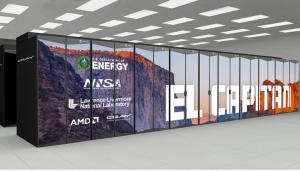
With its advanced computing and graphics processing units developed by AMD, El Capitan’s peak performance is expected to exceed 2 exaFLOPS, which would make it the fastest supercomputer in the world when it is deployed in 2023. Illustration courtesy of Hewlett Packard Enterprise.
Exascaling El Capitan
Lawrence Livermore National Laboratory (LLNL), Hewlett Packard Enterprise and Advanced Micro Devices Inc. this week announced the selection of AMD as the node supplier for El Capitan, projected to be the world’s most powerful supercomputer when it is fully deployed in 2023.
With its advanced computing and graphics processing units (CPUs/GPUs), El Capitan’s peak performance is expected to exceed 2 exaFLOPS, ensuring the National Nuclear Security Administration (NNSA) laboratories — LLNL, Sandia National Laboratories and Los Alamos National Laboratory — can meet their primary mission of keeping the nation’s nuclear stockpile safe, secure and reliable. (An exaFLOP is one quintillion floating point operations per second.)
Funded by the Advanced Simulation and Computing program at the Department of Energy’s National Nuclear Secuirty Administration, El Capitan will perform complex and increasingly predictive modeling and simulation for NNSA’s vital Life Extension Programs (LEPs), which address weapons aging and emergent threat issues in the absence of underground nuclear testing.

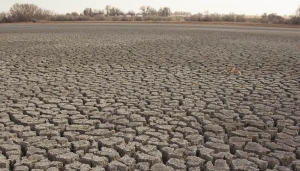
In 2012, countless lakes across the central United States went dry, including Teller Lake No. 5, in Boulder County, Colorado. Scientists are exploring the physical processes that can drive flash droughts, the existing capabilities to predict them and what is needed to establish an effective early warning system. Photo by Carlye Calvin/UCAR
Droughts can come quick as a flash
Flash droughts are a type of extreme event distinguished by rapid intensification of drought conditions with severe impacts. They unfold on subseasonal to seasonal timescales (weeks to months), presenting a new challenge for improving predictions of when flash droughts occur.
In new research published in Nature Climate Change, a multi-institutional collaboration including Lawrence Livermore climate scientist Celine Bonfils, explored current understanding of the physical processes that can drive flash droughts, the existing capabilities to predict them and what is needed to make progress to establish effective early warning of flash droughts.
"There is a growing awareness that flash droughts can trigger severe agricultural impacts while the mechanisms at their origin need more investigation. This makes flash droughts a compelling frontier for research, monitoring and prediction," Bonfils said.
Drought is perhaps the most complex and least understood of all weather and climate extremes. Despite an increasing drought risk in a future warmer climate, this risk is often underestimated and continues to remain a "hidden hazard." Drought can span timescales from a few weeks to decades, and areas from a few kilometers to entire regions. Impacts usually develop slowly, are often indirect and can linger for long after the end of the drought itself.
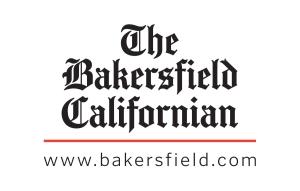
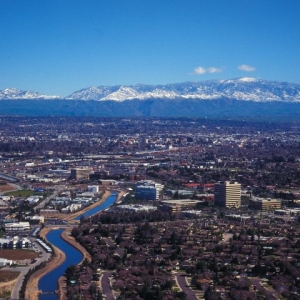
Kern County, including Bakerfield (above), could be a major contributor California’s goal of carbon neutrality by 2045.
Turning to Kern
Kern County has been identified as a key component to the state’s goal of carbon neutrality by 2045, and the Board of Supervisors has taken a small step toward making that goal a reality.
This week, supervisors voted to add carbon management industries to the county’s economic development program, Advance Kern, which offers incentives to certain industries county leaders hope to foster.
The vote came after a presentation by Lawrence Livermore National Laboratory, which recently completed a study that found current strategies and technologies could help siphon 125 million tons of carbon dioxide out of the atmosphere per year, a necessary task for the state to become carbon-neutral.
Kern County could be a major beneficiary of carbon sequestration efforts.
“This, I call the ‘no kidding, this is actually how you do it, no miracles’ path to carbon neutrality, which not coincidentally has enormous opportunities for the southern San Joaquin Valley,” Steven Bohlen, a program manager at Lawrence Livermore, told supervisors.

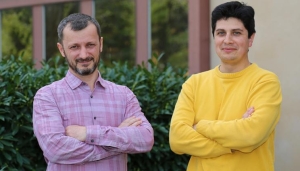
Lawrence Livermore computational mathematician Cosmin Petra and research engineer Ignacio Aravena led an team that took first place overall in Challenge 1 of the Department of Energy’s Grid Optimization Competition, an ongoing series of contests aimed at developing a more reliable, resilient and secure electrical grid. Photo by Carrie Martin/LLNL.
Gridding a win
A team of LLNL computer scientists and mathematicians bested more than two dozen teams to place first overall in Challenge 1 of the Department of Energy’s (DOE) Grid Optimization Competition, an ongoing series of contests aimed at developing a more reliable, resilient and secure U.S. electrical grid and solving complex grid problems.
Managed by DOE’s Advanced Research Projects Agency-Energy, the challenge stretched over the course of more than a year and featured teams from various universities, other DOE national laboratories and private companies. The LLNL team (gollnlp), led by computational mathematician Cosmin Petra from LLNL’s Center for Applied Scientific Computing and involving operations research engineer Ignacio Aravena from LLNL’s Computational Engineering Division, took first place in each of the four divisions of the first challenge, far outpacing the rest of the field.
The challenge required designing and implementing an algorithm for security-constrained optimal power flow, one of the most complex problems in planning short-term power grid operations. The problem involves figuring out how to operate the grid as cheaply as possible while maintaining reliability and security requirements. The objective was to create new software management solutions that would work in real time on a scale as large as the nation’s power grids.
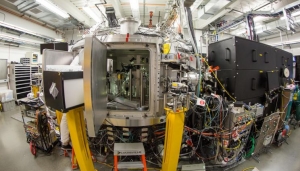
LLNL scientists used the Matter in Extreme Conditions beamline at the Linac Coherent Light Source at SLAC National Accelerator Laboratory for their research on melting and refreezing metal. Image courtesy of SLAC.
On the fast track
For the first time, Lawrence Livermore National Laboratory (LLNL) scientists and collaborators have observed the shock melting and refreezing of a metal (zirconium) at the picosecond scale (trillionths of a second).
Melting and freezing are some of the most common processes, but can be difficult to understand since the fundamental mechanisms occur on near-atomic and picosecond timescales.
“Detailed knowledge of these mechanisms and the ability to control them has the potential to revolutionize how we view melting and freezing, and could have advantageous applications such as material synthesis of metallic glasses,” said LLNL physicist Harry Radousky, lead author of a paper appearing in Physical Review Research.
Metallic glass, or glassy metal, is a solid metallic material, usually an alloy, with disordered atomic-scale structure and is used in a variety of applications, from making golf clubs to aerospace construction.
The team, made up of scientists from LLNL, SLAC National Accelerator Laboratory, Los Alamos National Laboratory, Carnegie Institution of Washington, Argonne National Laboratory and the University of Cologne, used ultrafast X-ray diffraction at the Matter in Extreme Conditions (MEC) beamline of the Linac Coherent Light Source (LCLS) at SLAC to observe shock melting driven by rapid (120 picosecond) laser pulses on a thin bilayer of aluminum/zirconium.





